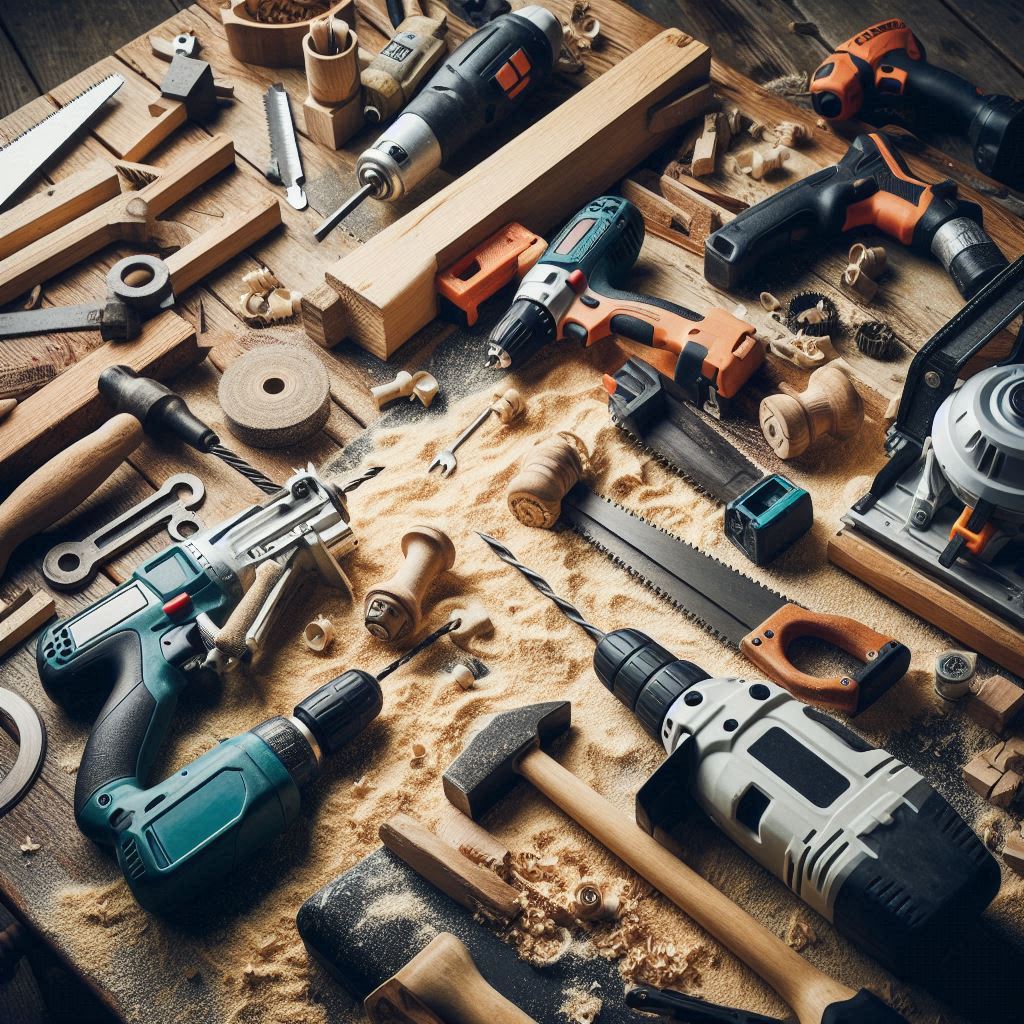Table of Contents
Jumping into the second hand tools market might feel a bit overwhelming at first, but it’s packed with potential savings and unique finds that brand new stores just can’t offer. Whether you’re a seasoned DIY enthusiast or just getting into home improvements, knowing where to get quality tools without breaking the bank can make all the difference.
The main idea here is about going second hand. You’re not only saving money, you’re also sometimes getting your hands on tools that have been out of production but are still top performers. Many older tools are built to last, providing great value compared to newer, less durable counterparts, and they come with the added benefit of being easy on your wallet.
As we explore the world of secondhand tool shopping, I’ll share insights on the best platforms for scoring deals, from local garage sales and flea markets to online giants like eBay. Tools are out there waiting to be discovered at fraction of the original price. However, landing a great deal is about knowing what to look for and being informed.
Understanding what to expect, how to verify quality, and having the knack for spotting bargains can really up your tool game. This guide will set the foundation for making smart purchases, ensuring you have reliable gear for all your projects without the steep price tags.
Top platforms for purchasing second hand tools
Finding the right place to buy secondhand tools can feel like unlocking a treasure map.
- Online marketplaces are a great starting point. Craigslist, eBay, and Facebook Marketplace are where many people list their unused or lightly used tools. These platforms give you access to a wide variety of tools with the convenience of browsing from home. However, it’s important to keep an eye out for new listings regularly to snag the best deals.
- Local options can be just as rewarding if you love a treasure hunt. Garage sales and flea markets often have people clearing out tools they no longer need. These events provide the chance to handle the tools, giving you the tactile experience of checking the condition right then and there. Plus, you’re in a great position to haggle down prices.
- Pawn shops can be a surprising goldmine for tools. People often sell quality items to pawn shops for quick cash, meaning you might find branded tools at a fraction of their retail price. Establishing a rapport with your local pawn shop owner can sometimes give you a heads-up when quality tools are brought in.
- Specialty sources like estate sales and online tool forums can unearth unique finds. Estate sales, in particular, often feature older, high-quality tools owned by seasoned craftsmen. Tool forums or groups on platforms like Reddit can also offer insider tips on where to find reliable secondhand options, connecting you with a community of enthusiasts eager to share their knowledge.
Whether you prefer the convenience of online browsing or the hunt of local sales, knowing the strengths of each platform will help streamline your search and maximise your chances of finding the right tools at unbeatable prices.
Ensuring tool quality: What to look for
Before you hand over your hard-earned cash for secondhand tools, it’s crucial to know what you’re looking at. Trust me, there’s a knack to it, but you’ll get the hang of it with a bit of practice.
For hand tools, start by inspecting for signs of wear and tear. Check for dents, rust, and whether any moving parts are stiff or loose. A little rust isn’t always a dealbreaker, but extensive corrosion can compromise the tool’s function.
Power tools require a more detailed look. Test each one if possible; plug it in, turn it on, and see how it runs. Listen for strange noises which might indicate internal issues, and inspect cords for any fraying, which is a safety hazard.
Safety features are another critical factor. Ensure all parts, like guards on saws or safety switches on drills, are functioning as they should. Missing or broken safety components reduce tool usability and could pose risks during use.
Knowing which brands are reliable helps too. Brands like Milwaukee, DeWalt, Makita, and Bosch have good reputations for durability and performance, so finding their tools used can mean picking up strong, reliable gear.
Being able to accurately assess the condition and quality of used tools sets the foundation for making informed purchases. It equips you with the confidence to negotiate prices and avoid buying something that won’t meet your needs.
Pros and Cons of second hand tool purchases
Choosing to buy secondhand tools has its highs and lows. On one side, you’ve got the significant advantage of affordability.
Pros
Used tools often come at a fraction of the cost of new ones, making them a great choice for anyone on a budget or just starting out in DIY or professional projects. Plus, you might stumble upon older models that, while no longer manufactured, offer superb quality and durability.
Another perk is the potential for high-quality finds. Some older tools were built to last, with sturdy materials and craftsmanship that modern counterparts sometimes lack. This could mean getting your hands on tools that deliver even better performance than new models.
Cons
However, diving into the world of secondhand tools isn’t without its downsides. One of the main drawbacks is the absence of a warranty, which new tools usually offer. This means if something goes wrong shortly after purchase, you’re on your own for repairs or replacements.
There’s also the risk of hidden issues. A tool might look fine on the surface but could harbor internal damages or have parts nearing the end of their lifespan. It’s crucial to know what to look for and to test tools whenever possible before purchasing.
Despite these challenges, being vigilant and well-informed can help you navigate these potential pitfalls. By weighing these pros and cons, you’ll be better equipped to make smart, worthwhile investments in your tool collection.
Understanding the market: Pricing used tools fairly
Getting a fair deal on used tools is about knowing the market. You want to make sure that you’re not overpaying, but also not undervaluing a tool’s worth.
Start by comparing prices across different platforms. Online marketplaces, local sales, and pawn shops often have varying price ranges for similar items. By checking several places, you get a good sense of the going rate. It gives you leverage to negotiate if you know a tool is being priced higher than elsewhere.
Consider the age and condition of the tool. Older tools, especially those models no longer in production, may cost more if they’re of notable quality. However, the condition must justify the price. A tool in mint condition naturally demands a higher price than a similar one with visible wear.
Understanding current market value is essential. Tools from reputable brands like DeWalt or Bosch may retain value longer compared to lesser-known brands. This can influence what you’re willing to pay versus the potential longevity and utility you’ll get from the purchase.
Utilise resources like online forums, pricing apps, or tool communities that discuss fair pricing. Insights from fellow buyers and sellers can highlight trends and help you spot when a price is more about enthusiasm than actual worth.
Prioritising safety when buying used hand tools
Safety should always be at the forefront when diving into the secondhand tool market. Used tools can sometimes harbour unseen hazards, so knowing what to check is vital.
CORDS
One common issue is frayed cords on power tools. This might not be immediately noticeable but can lead to safety risks like electric shocks or short circuits. Take a close look, and if in doubt, be ready to walk away unless you can get it repaired effectively.
RUST
Rust is another red flag, especially for power tools and any component exposed to the elements. While a bit of surface rust might seem minor, it can lead to more significant issues if left unchecked. Take a rusted piece as a sign to dig deeper into the tool’s overall condition.
SAFETY FEATURES
It’s crucial to ensure all safety features are intact. Guards, emergency shut-offs, and safety switches need to be present and operational. Missing these components makes a tool not only less safe but also harder to handle confidently.
INSTRUCTION MANUALS
Apart from the tool’s physical state, consider the original instructions or manuals. These can offer guidance on proper usage and maintenance, ensuring you’re using each tool as safely as possible. If manuals aren’t available, online searches can sometimes yield a digital version.
Checking these aspects before buying protects you from potential injuries or costly repairs down the road. Even used, a tool should be reliable and secure while you work.
Strategically choosing tools to buy second hand
Not every tool is worth buying secondhand, so it pays to know which ones are a smart choice. Hand tools and power tools each have their own features and factors to consider.
Power tools require a bit more scrutiny. Drills, saws, and sanders, for example, rely heavily on their motor condition. Be sure those essential components are functioning well, and pay attention to any odd noises or vibrations when testing them.
Then there’s specialty equipment, which often holds value due to its specific applications and sometimes higher original price. If you find specialty tools secondhand, confirming their functionality and condition is key to securing a worthwhile investment.
Maximising value: Insider tips for successful purchases
Getting the most bang for your buck is the final piece of the puzzle when buying used tools. A skill that can make all the difference is learning how to negotiate effectively with sellers. Be polite but firm in your offers, using the knowledge you’ve gathered about market pricing and tool condition as leverage to argue for discounted rates.
Reconditioned tools are another path worth considering. These items have been fixed up and tested, usually by the manufacturer or a certified specialist, which can provide a bit more peace of mind regarding their reliability. They often come at a good discount compared to new ones, with the added benefit of warranties in some cases.
Think about the long term, too. Investing a little time and effort into maintaining your tools can greatly extend their lifespan. Routine checks, cleanings, and minor repairs here and there can ensure they continue serving you well beyond your initial expectations.
By combining savvy buying strategies with diligent maintenance, you not only save money but also build a reliable collection of tools that reflect your needs and preferences perfectly.
Armed with this knowledge, you’re now ready to make informed decisions and smart investments in your tool shopping adventures. With some patience and the right eye for quality, the world of secondhand tools can offer plenty of rewards.
Kay
secondlifeloot.com

